Lessons from Chanticleer – when a Path becomes an Experience
Have you ever visited a garden that literally took your breath away? The sun was barely cresting the horizon when I drove into Chanticleer Garden, affording the merest glimpse of what I would ultimately see. Although I had enjoyed slide presentations, photographic blog posts, and books on this unique place I still gasped a little as I entered the renowned Teacup Garden.
Yet as a designer I was looking for more than just photo opportunities – I was looking for ideas that the home gardener could glean and re-interpret to suit their budget and style, and that is where Chanticleer both excels and sets itself apart. So with that in mind, I've distilled my 500 images down to a handful to illustrate some of the many design tips that inspired me, focusing in this post in what is often overlooked for artistic expression – paths.
Pathways
Every garden needs paths as a means of getting from A to B. Whether utilitarian (getting the garbage cans to the sidewalk), leisurely strolling paths or directional (the primary path leading guests to the front door for example), there is an opportunity to add a level of detail and artistry.
Obscuring the final destination by curving the path and adding billowing plantings adds intrigue as shown in the photo above.
If the path necessitates a more abrupt change of direction, why not enhance that? In the photo below, notice how the spiral theme is repeated on the low stone wall, the pavers and the handrail. The introduction of new materials (stone pavers cut into the path) adds interest which is especially appreciated since one needs to slow down to turn the corner.
Incorporating new materials or a design element at a transition in the path can also help visitors find their way, such as the circle detail indicating a side path to the Tennis Court Garden. Notice how this secondary path continues in pavers, again distinguishing its purpose.
Bridges
What happens when your path needs to cross a seasonal stream, dry creek bed or culvert? Do you head to the nearest box store for the ubiquitous Japanese style bridge? Chanticleer designs and creates far more exciting ideas to get us thinking of the possibilities!
The stone-topped bridge shown below is in the Asian Woods. Notice the bamboo-inspired detail on the railing. This combination of metal and wood craftsmanship is a recurring theme at Chanticleer.
In another area, the organic form of the surrounding forest inspired these trunk-like posts. Notice the cobble detail in the pathway enhancing the experience and transition.
Steps
Changes in elevation necessitate a series of steps or a ramp. Once again Chanticleer seizes the opportunity to add artistic detail.
The Gravel Garden was alive with color and movement when I visited late October. Billowing clouds of pink muhly grass competed with bold stands of seedheads from black eyed Susan's (Rudbeckia sp.) for my attention, as did architectural specimens such as beaked yucca (Yucca rostrata) and late blooming asters. Clearly I was not looking where my feet were going – my head was on a swivel!
This garden is carved out of a hillside. The designers at Chanticleer knew they needed a clear, safe path to navigate the steep, rocky terrain – but they also knew how to make it beautiful.
Wide, shallow steps, clearly defined by stone ledges help the distracted visitor explore the garden with ease, while the casually curved route transforms this from a flight of steps to a memorable experience.
Plants are allowed to encroach lightly onto the pathway, softening the hardscape while the choice of materials integrates the steps into the gravel-topped landscape.
Steeper flights of steps may need a handrail – an opportunity for the Chanticleer artisans to get creative once again. Just one of many examples is depicted below, organic plant forms inspiring the design.
Chanticleer is not just a garden. Every detail, every moment is memorable. Yes, there are wide open vistas, remarkable foliage combinations, pleasant walks, colorful flower-filled borders, an inspiring vegetable garden, reflecting pools, portals, outstanding use of 'borrowed views' and axial sight lines. Chanticleer is all that and more. It is an experience.
When to Visit
I was fortunate to be able to visit before the gardens closed for the winter and am grateful to my friends Bill Thomas and Dan Benarcik for granting me early morning access. The gardens re-open to the public on March 28th 2018. Full details and directions here
Perfect Holiday Gift
This is a garden you need to visit often. Check out the website to get a sense of what each season offers – and still expect to be surprised.
If you live within easy traveling distance of Wayne, Pennsylvania, I recommend you treat yourself and a friend to a 2018 season pass.
Live farther away? I love their latest book The Art of Gardening: Design Inspiration and Innovative Planting Techniques from Chanticleer (Timber Press, 2015). It would be a truly inspiring gift for any occasion and any gardener and is choc-full of dreamy photos by the talented Rob Cardillo. Use my affiliate link to find out more and to save a few pennies:
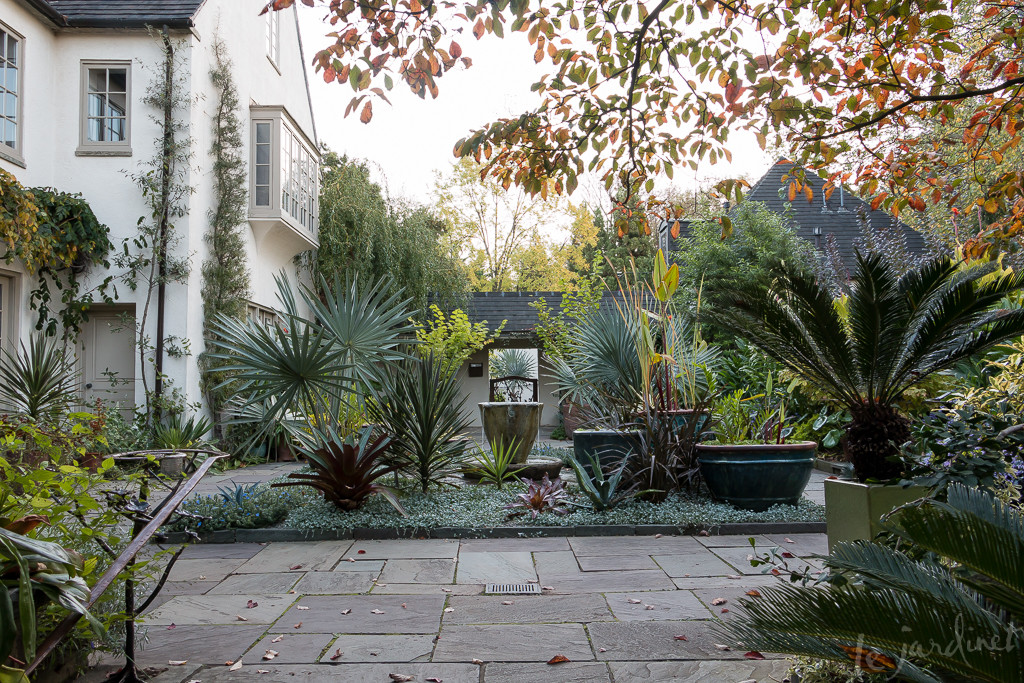
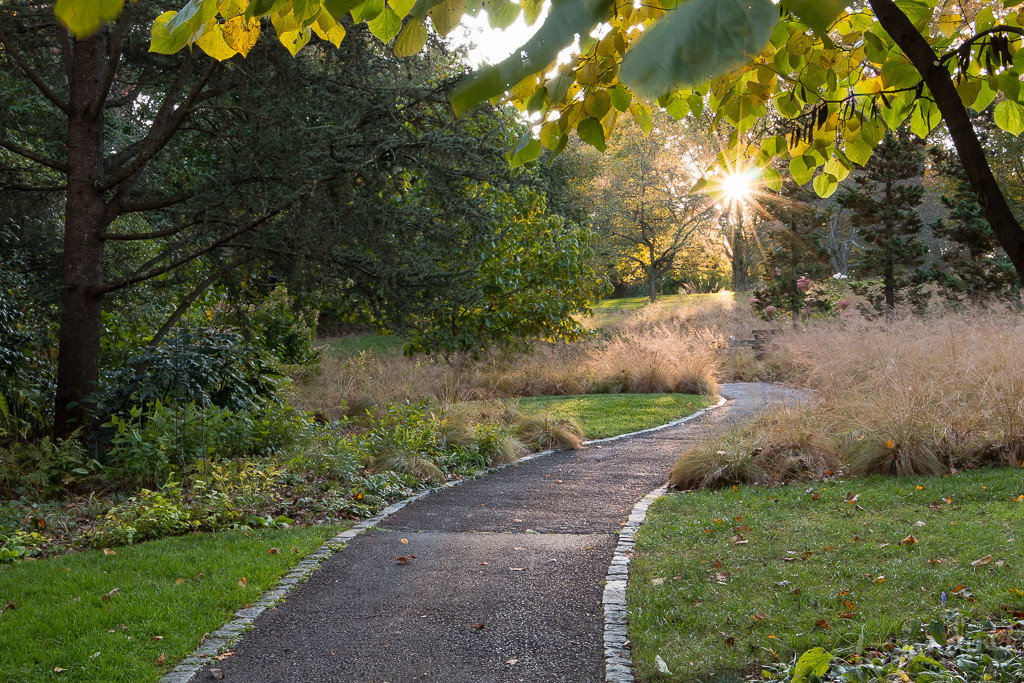
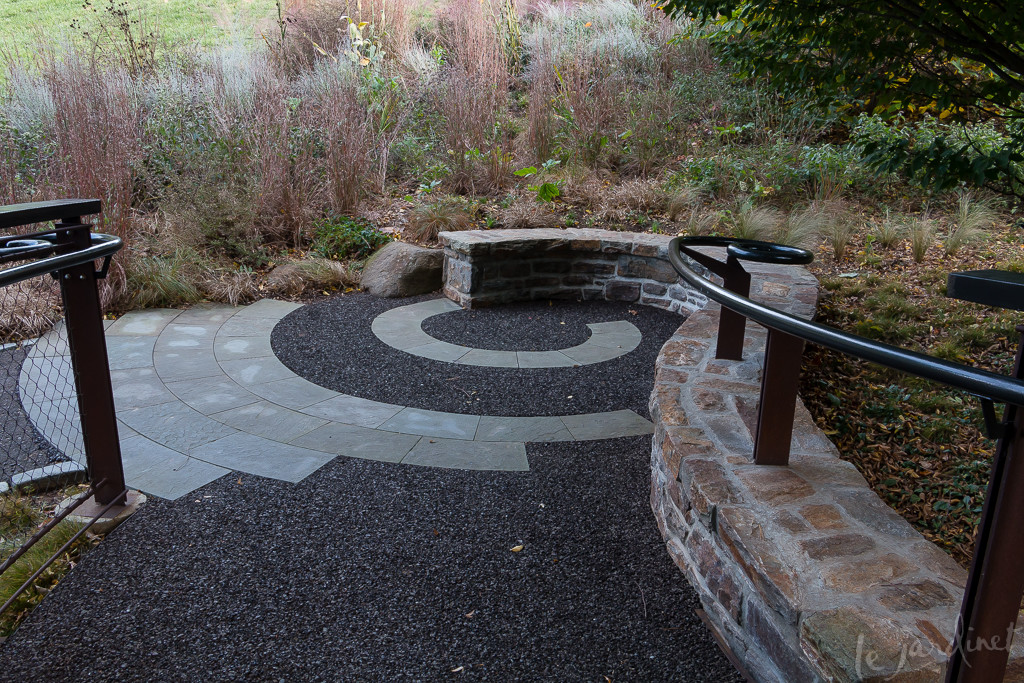
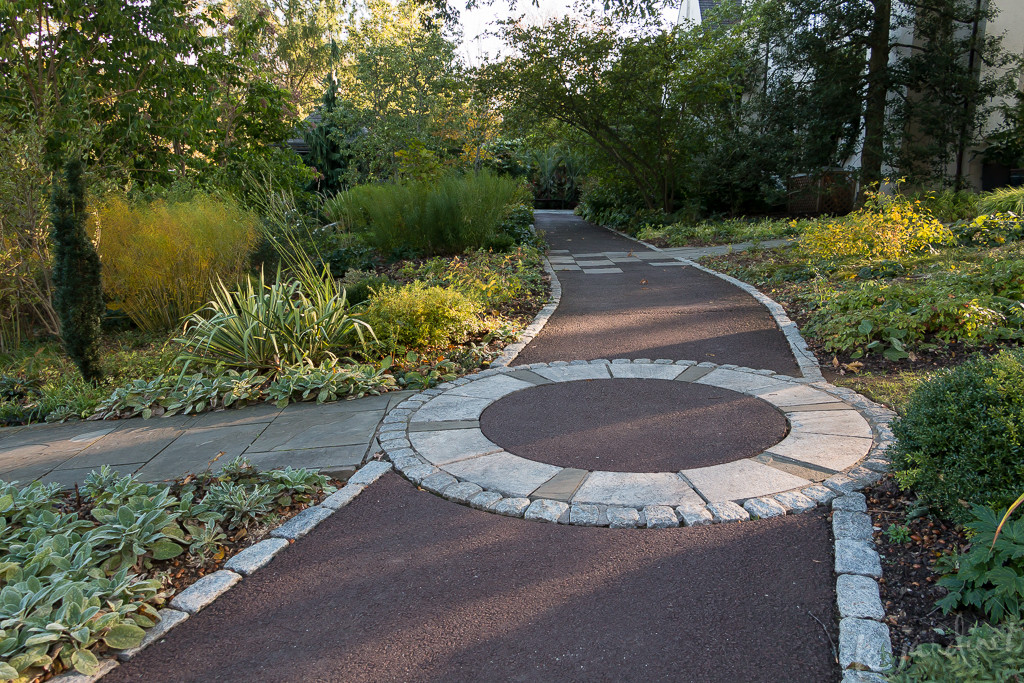
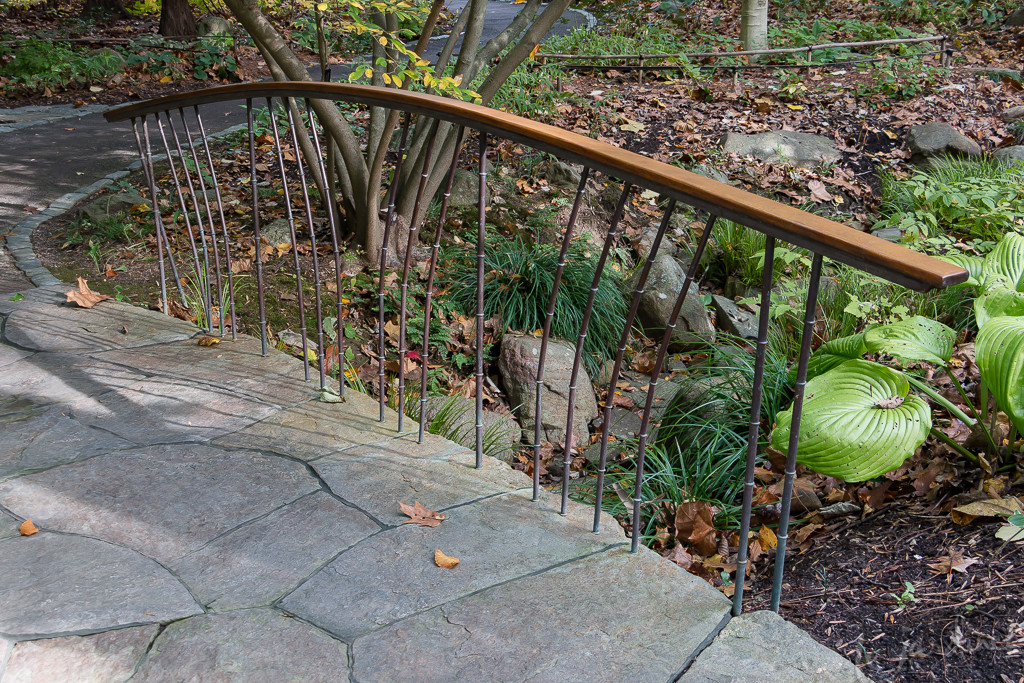
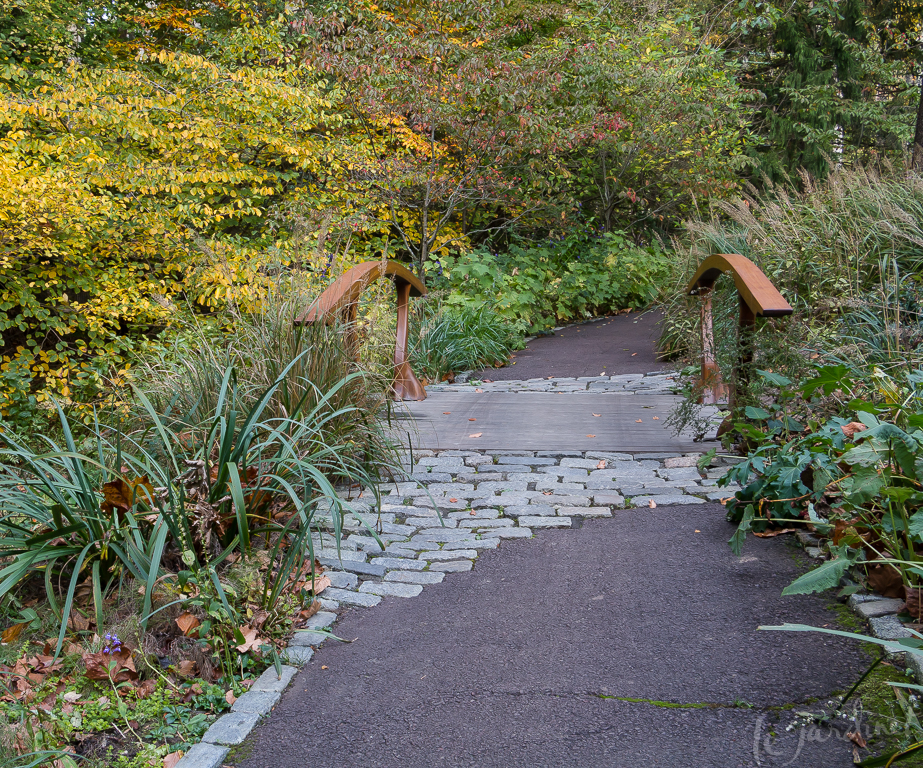
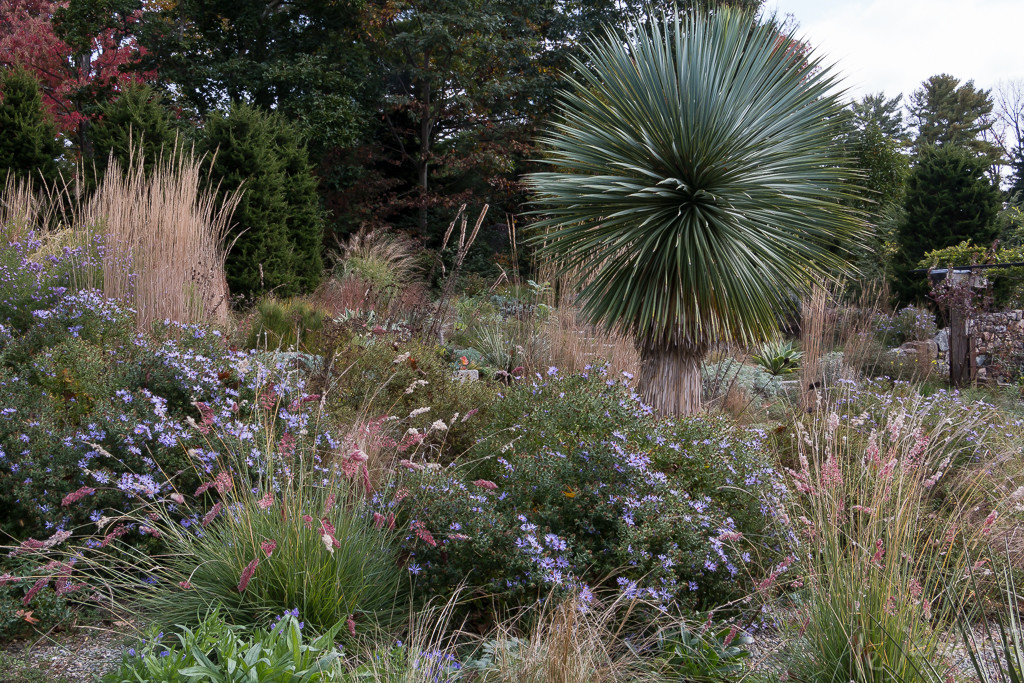
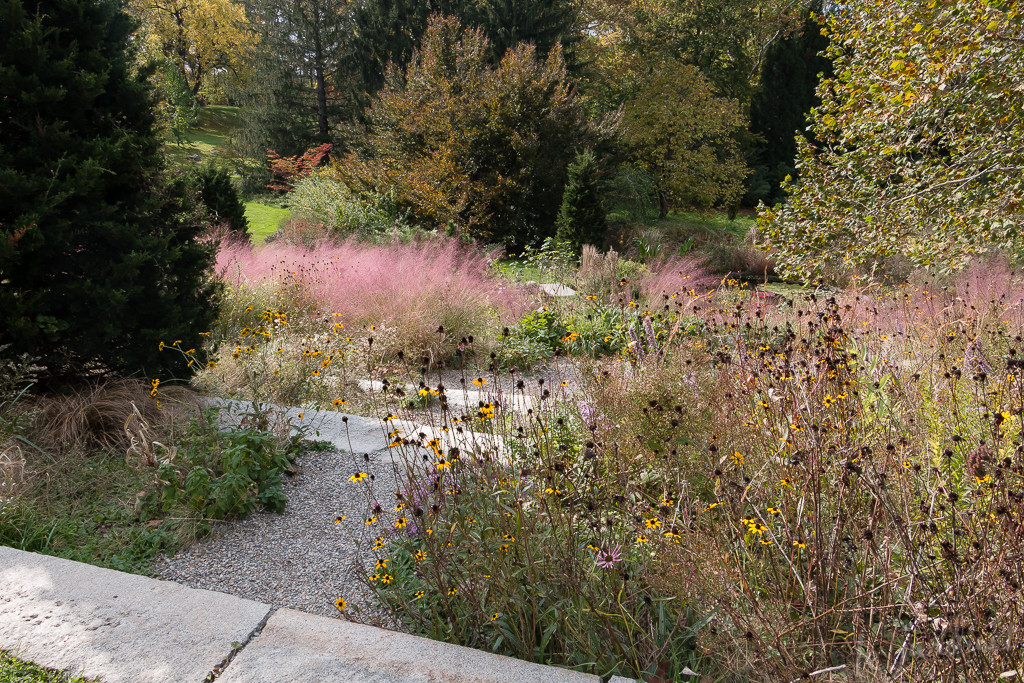
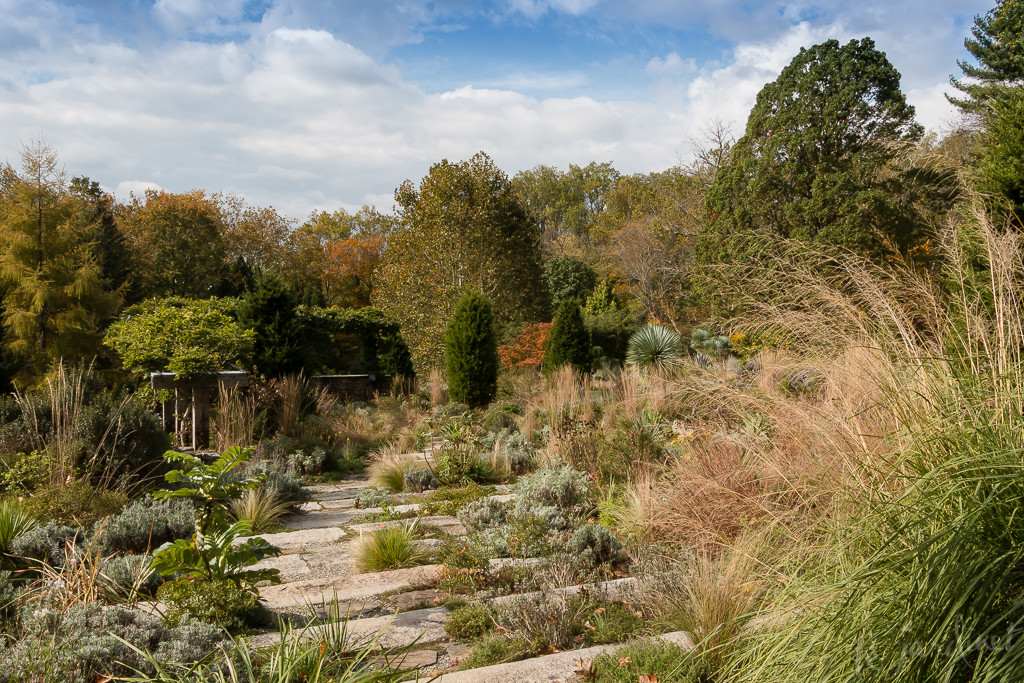
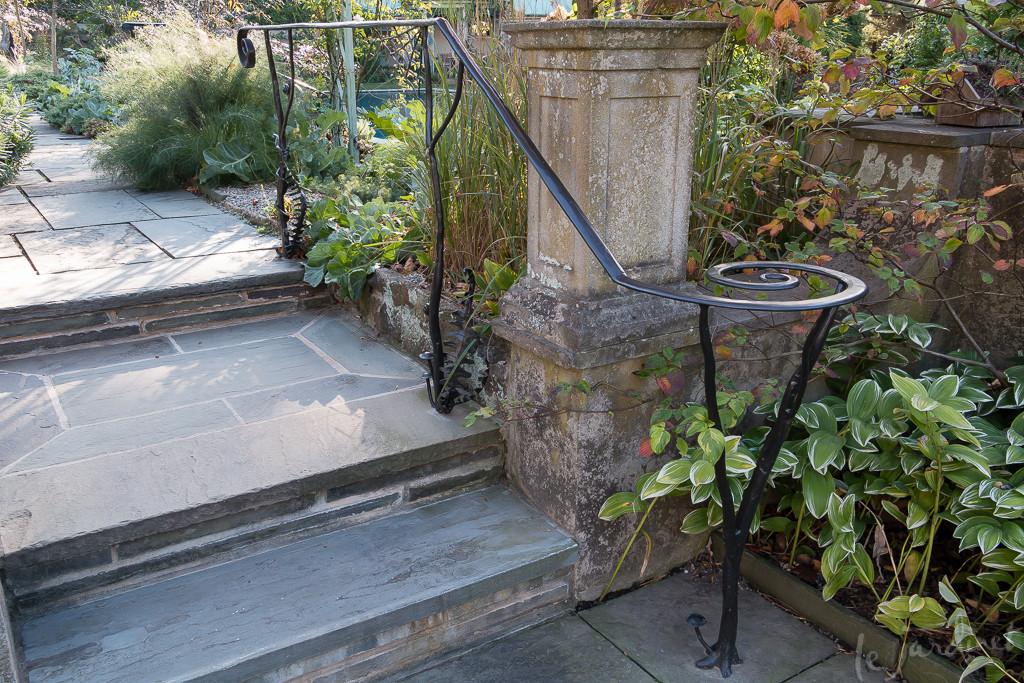
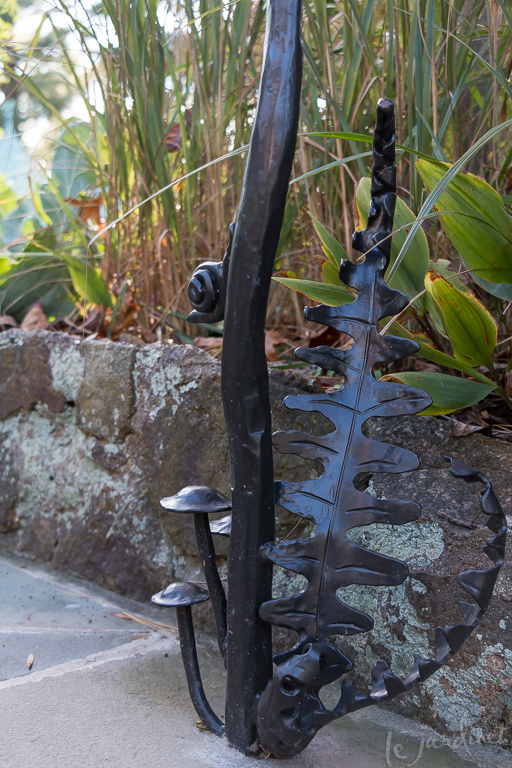
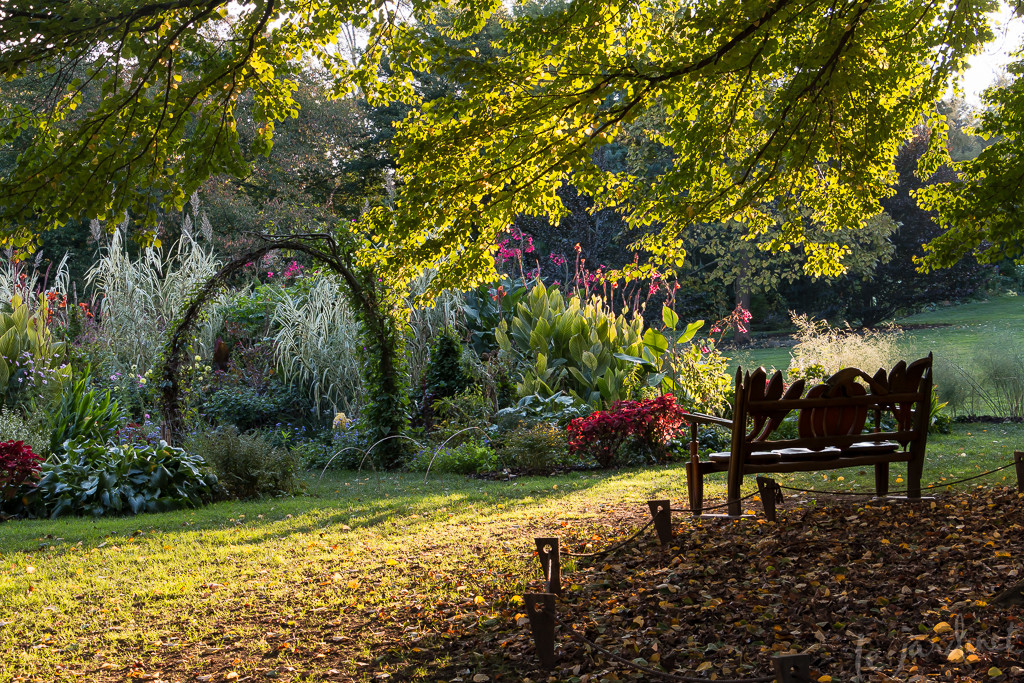
I was there on October 27th for my first visit; I didn't want to leave even after hours, as I was sure I'd missed something amazing. Needless to say, I was ready to move to this area of Pennsylvania so that I could visit weekly. My brother had given me the beautiful book on Chanticleer, but you're right, it can't really capture the garden.
I did warn Dan and Bill that they'd better check I wasn't hiding under the shrubs somewhere when they closed. There was just so much to take in.Incidentally we must have missed each other by hours!
Beautiful garden, beautiful observations, beautiful penmanship. I've now visited there in spring, summer and fall. The gravel garden was always my least favorite area, but, this year, in autumn, it was my favorite! I love your observations about pathways. Garden paths have always intrigued me. One day I'd love to write a book about them and their psychological/philosophical implications. Hmmm.
I remember you saying that about the Gravel Garden – and it made me stop to look at it differently than I might have otherwise.This is a garden that can be enjoyed and appreciated on so many levels – I can't wait to go back
It was the spring of 2014 that we visited and it was worth every minute of our 12-hr. drive to get there. More than three years later I still recall how “filled up” I was when we left. We had to get a new porch railing a few months ago and it was fashioned after one there….every time I look at it I think of Chanticleer. The plantings, artwork, design…..everything was memorable. I hope someday we can visit again.
I know exactly what you mean Ann. It epitomizes the very best of garden design in terms of the experiences one has